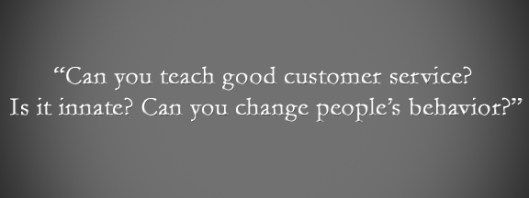Tags
business leader, business management, business solutions, communication, health care management, hospital management
Although it is outside of my context, I can’t help but hear Paul Simon sing: “Keep the Customer Satisfied” when I’ve told my teams—regardless of the make-up of that team and their pay grade, status, and job responsibilities—that we all must practice good customer service each and every day.
I remind them in team meetings and individually that by giving all of our patients good customer service that we build relationships, encourage communication, cut down the number of missed appointments, and improve results for everyone involved.
I’m sure that I don’t need to lecture anyone in healthcare that this is one of the three components of the Institute for Healthcare Improvement (IHI) Triple Aim of optimizing health system performance. Many of us feel that this point drives the other two. Specifically stated, we need to:
Improve the patient experience of care (including quality and satisfaction).
In healthcare (as it is in retail and other businesses), the customer who presents himself with a physician’s order or walks into the shop is easily identifiable. What I’ve done in my training is to make my staff aware that everyone—including not just the patients and referral sources, but also their peers at work—are customers. They all deserve to be approached and catered to as valued customers.
This refrain echoes the Golden Rule, but I feel that it rings just as true as ever. And, like practicing the Golden Rule of “One should treat others as one would like others to treat oneself,” I understand that compliance is not always easy. The challenge here, however, doesn’t lessen the importance of this goal.
–
Can you teach good customer service? Is it innate? Can you change people’s behavior?
In the military, boot camp goes over and over certain actions that usually do not come naturally to most men and women: think bayonet drills. It is said that when you are placed in a challenging situation, you will not survive by resorting to your instinct; the constant drilling makes sure that you, instead, fall back on your training.
With this mantra in mind, I teach and regularly review chosen relaxation exercises with my patients. This repetition, I’ve found, assures that my exercises become embedded, nearly second nature, and effective for my patients who are striving to find peace following trauma.
Good customer service training is critical and it is imperative that all of your staff knows what you mean and what is your expectation for their performance.
–
Social workers beware! Being empathic, caring and approachable is not always the same as good customer service. These traits, however, are key in establishing a relationship, but don’t necessarily line up with how your organization wants you to perform.
For many new trainees, learning an organization’s protocols and approaches may feel foreign and so patience and nurturing needs to be built into the education. Written manuals that are distributed to staff to review and be quizzed on periodically in the first three months is pretty standard and can serve as a benchmark for the trainer to know what lessons need more explanation and who needs more education.
The leader/trainer, at the same time, becomes a model of customer service.
Like children, we all watch and imitate senior staff especially in jobs that are new to us. At the same time, if we identify inconsistencies or a loophole, like teenagers, we will exploit it and shrug off the earlier lessons. After all, as a wise man once said, “A man hears what he wants to hear and disregards the rest.”
So here is another challenge in leadership: Walking the talk.
Not unlike conscientious parents, leaders nurture, provide guidance, show patience, and present opportunities for growth to our staff. Furthermore, leaders do not show preference to one staff over another or abuse the power one pay grade or hierarchical position has over another.
–
How do you measure customer service success?
Can it be done with customer endorsement, new referrals, new revenue sources, improved patient satisfaction scores, or low staff turnover?
The answer is yes.
But time, two to three years, is important to pass with the implementation of customer service education to truly determine if it is the leadership approach is making the difference, rather than a slow feedback loop for collecting data or a delayed accounts payable system.
Strive to be that Bridge Over Troubled Waters. (Sorry, Rhymin’ Simon)









